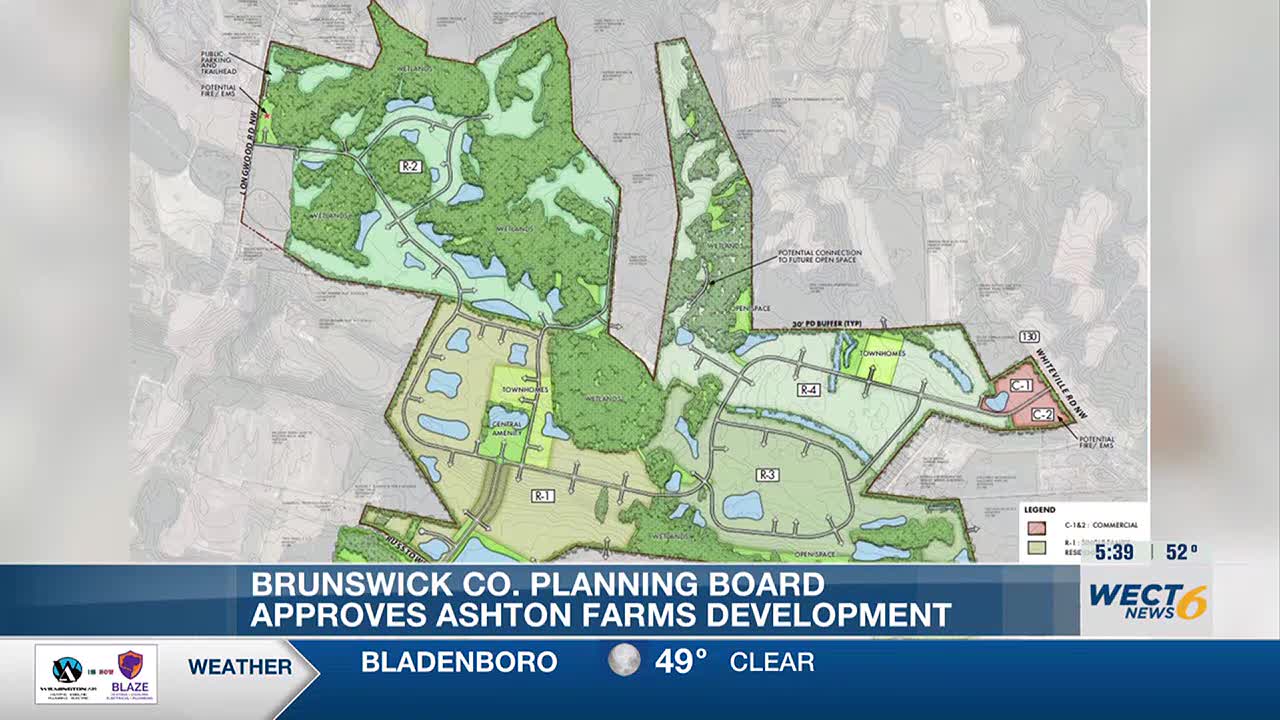
Report on the Marine Industry Development in North Carolina with Emphasis on Sustainable Development Goals (SDGs)
Introduction
This report presents insights from a conversation with Bob Peele, Director of the Wanchese Marine Industrial Park and representative of the North Carolina Marine Industrial Park Authority. The discussion highlights the thriving marine industry in North Carolina, a state with a long-standing relationship with its waterways along the Atlantic Coast. The report emphasizes the alignment of the marine industry’s growth with the United Nations Sustainable Development Goals (SDGs), particularly those related to economic growth, industry innovation, and sustainable communities.
North Carolina’s Marine Industry and Infrastructure
North Carolina’s marine industry is supported by extensive infrastructure, a skilled workforce, and innovative practices. The state’s marine industrial parks, including the newly developed Perquimans Marine Industrial Park, serve as hubs for economic activity and sustainable industrial development.
Perquimans Marine Industrial Park
- Located within the North Carolina Marine Industrial Park Authority’s facilities.
- Features a 16-acre upland basin designed to support marine-related businesses.
- Designated as an ElectriCities Smart Site, promoting sustainable industrial practices.
- Open for business, contributing to local economic development and job creation.
Role of ElectriCities of North Carolina
ElectriCities of North Carolina plays a critical role in supporting the marine industry and local communities through sustainable energy and economic development initiatives. The organization’s contributions align with several SDGs, including affordable and clean energy (SDG 7), industry innovation and infrastructure (SDG 9), and sustainable cities and communities (SDG 11).
- Provides power supply and critical services to over 90 community-owned electric systems across North Carolina, South Carolina, and Virginia.
- Manages power supply for two power agencies in North Carolina.
- Offers technical services to optimize electric distribution systems.
- Delivers innovative legislative, technical, communications, and economic development expertise to support public power providers.
Alignment with Sustainable Development Goals (SDGs)
The ongoing development of North Carolina’s marine industry and infrastructure supports multiple SDGs, including:
- SDG 8: Decent Work and Economic Growth – Through job creation and fostering sustainable economic activities in marine industries.
- SDG 9: Industry, Innovation, and Infrastructure – By developing advanced marine industrial parks and promoting innovative industrial practices.
- SDG 11: Sustainable Cities and Communities – Supporting community-owned power systems and sustainable industrial development.
- SDG 7: Affordable and Clean Energy – Ensuring reliable and sustainable energy supply to marine and community industries.
Conclusion and Future Outlook
The North Carolina Marine Industrial Park Authority, in partnership with ElectriCities of North Carolina, continues to advance the marine industry while emphasizing sustainable development aligned with global goals. The introduction of the Perquimans Marine Industrial Park marks a significant milestone in this effort, providing a model for sustainable industrial growth.
Upcoming Initiatives
Further insights and developments will be shared in the upcoming episodes of The Business Facilities Podcast series, presented by ElectriCities of North Carolina, focusing on economic and community development efforts supporting sustainable growth in the region.
1. Sustainable Development Goals (SDGs) Addressed or Connected
- SDG 8: Decent Work and Economic Growth
- The article discusses the thriving marine industry in North Carolina, highlighting economic development, workforce, and innovations, which align with promoting sustained, inclusive economic growth and productive employment.
- SDG 9: Industry, Innovation, and Infrastructure
- Reference to the development of the Perquimans Marine Industrial Park as a Smart Site and the focus on infrastructure and innovation connects to building resilient infrastructure, promoting inclusive and sustainable industrialization, and fostering innovation.
- SDG 7: Affordable and Clean Energy
- ElectriCities provides power supply and related services to community-owned electric systems, indicating a role in ensuring access to affordable, reliable, sustainable, and modern energy.
- SDG 11: Sustainable Cities and Communities
- The development of industrial parks and community-owned electric systems supports sustainable urban development and infrastructure.
2. Specific Targets Under Those SDGs Identified
- SDG 8 Targets
- Target 8.2: Achieve higher levels of economic productivity through diversification, technological upgrading, and innovation.
- Target 8.5: Achieve full and productive employment and decent work for all.
- SDG 9 Targets
- Target 9.1: Develop quality, reliable, sustainable, and resilient infrastructure.
- Target 9.5: Enhance scientific research, upgrade technological capabilities of industrial sectors.
- SDG 7 Targets
- Target 7.1: Ensure universal access to affordable, reliable, and modern energy services.
- Target 7.a: Enhance international cooperation to facilitate access to clean energy research and technology.
- SDG 11 Targets
- Target 11.3: Enhance inclusive and sustainable urbanization and capacity for participatory, integrated planning.
3. Indicators Mentioned or Implied to Measure Progress
- SDG 8 Indicators
- 8.2.1: Annual growth rate of real GDP per employed person.
- 8.5.2: Unemployment rate, by sex, age, and persons with disabilities.
- SDG 9 Indicators
- 9.1.1: Proportion of the rural population who live within 2 km of an all-season road (implied by infrastructure development).
- 9.5.1: Research and development expenditure as a proportion of GDP (implied by innovation focus).
- SDG 7 Indicators
- 7.1.1: Proportion of population with access to electricity (implied by ElectriCities’ power supply services).
- 7.a.1: International financial flows to clean energy research and development.
- SDG 11 Indicators
- 11.3.1: Ratio of land consumption rate to population growth rate (implied by sustainable urban and industrial park development).
4. Table of SDGs, Targets, and Indicators
| SDGs | Targets | Indicators |
|---|---|---|
| SDG 8: Decent Work and Economic Growth |
|
|
| SDG 9: Industry, Innovation, and Infrastructure |
|
|
| SDG 7: Affordable and Clean Energy |
|
|
| SDG 11: Sustainable Cities and Communities |
|
|
Source: businessfacilities.com







